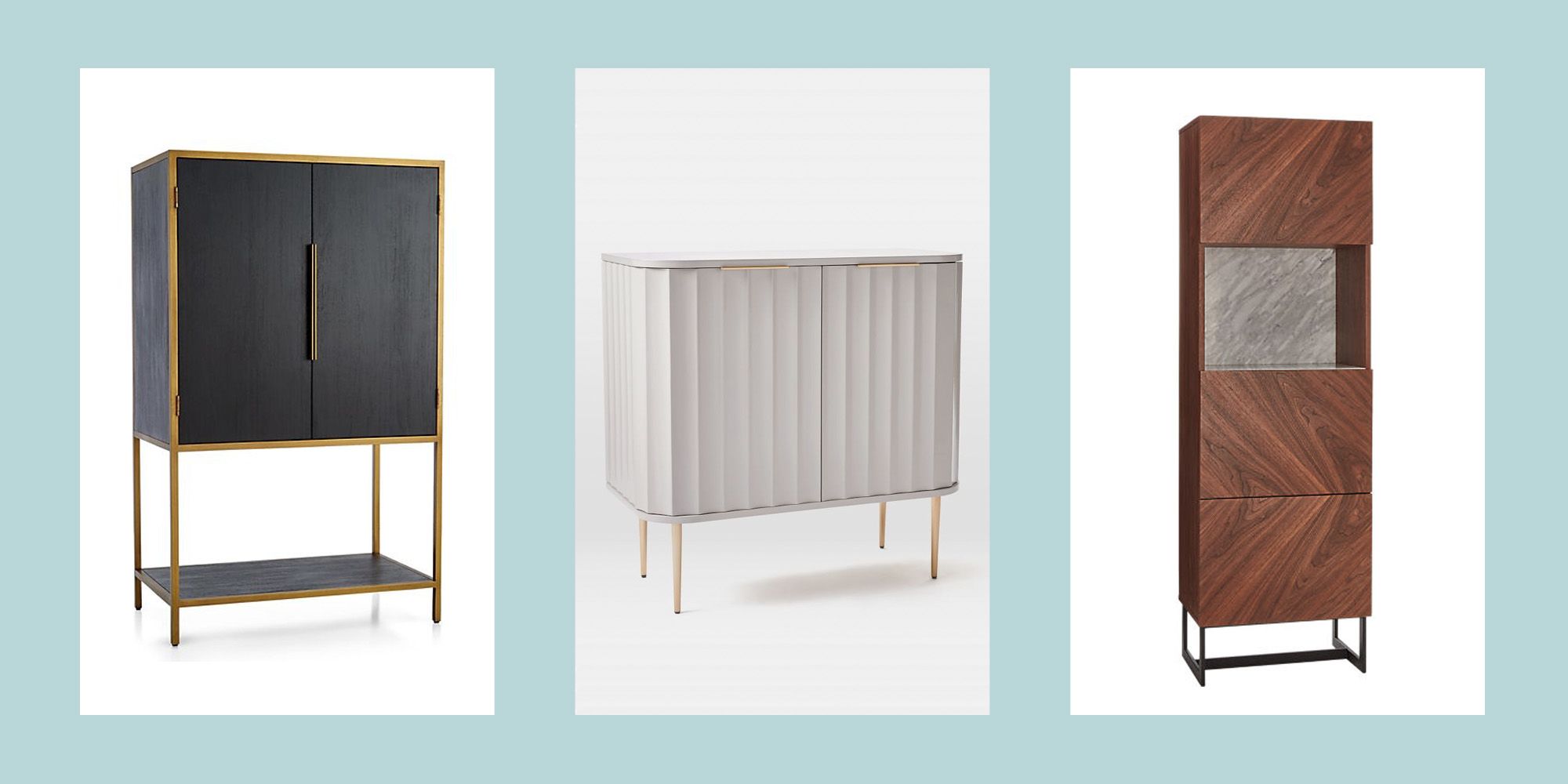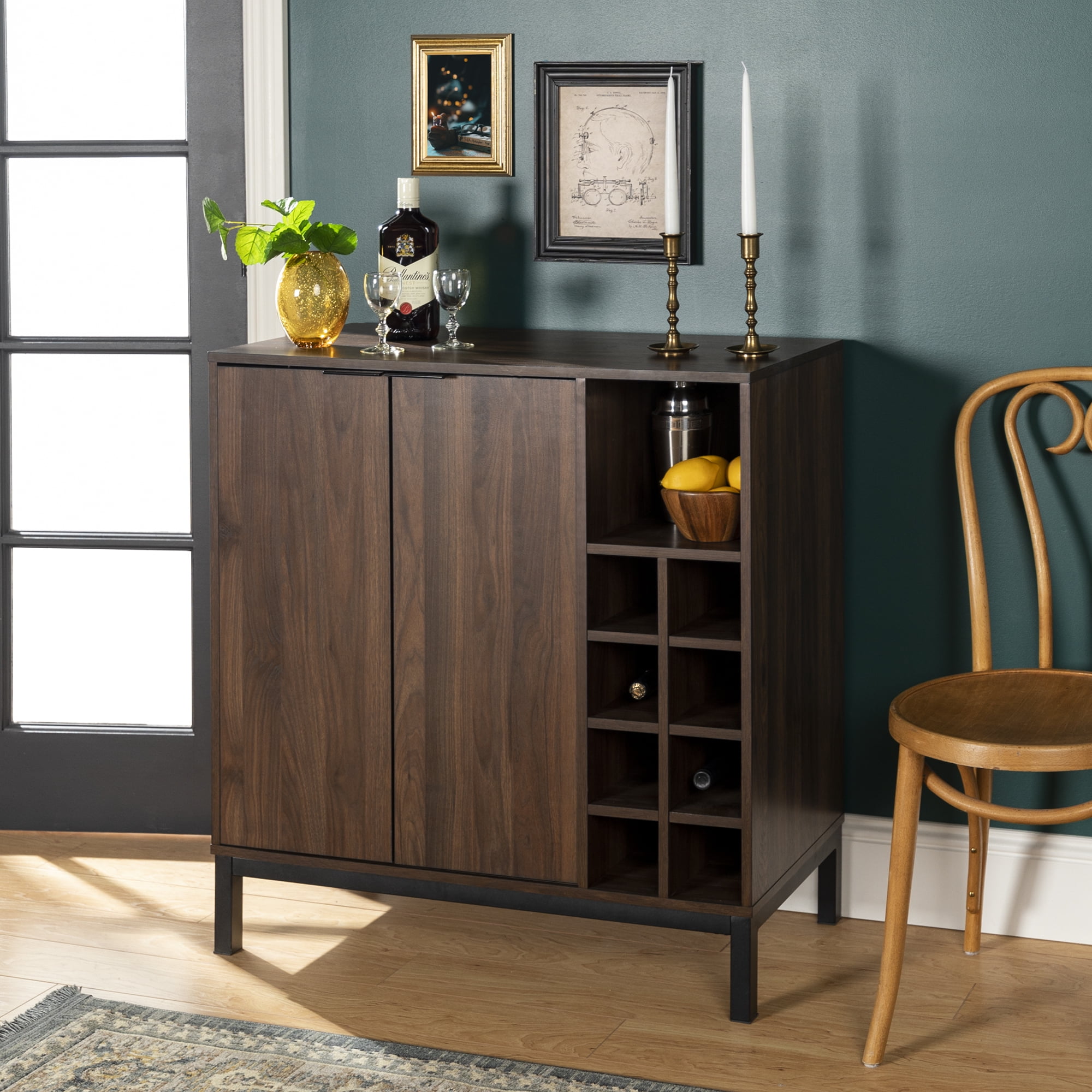The Evolution of the Bar Cabinet: All Modern Bar Cabinet

The bar cabinet, a fixture in homes and social spaces, has undergone a fascinating evolution, reflecting changing tastes, materials, and design philosophies. From its humble beginnings as a simple storage unit to its modern incarnations as a statement piece, the bar cabinet’s journey offers insights into the history of design and our evolving relationship with the art of entertaining.
Early Origins and Traditional Designs
The earliest bar cabinets emerged in the late 19th century, primarily serving a practical purpose – storing liquor and glassware. These cabinets were often built-in, crafted from sturdy wood like oak or mahogany, and featured simple, functional designs. The focus was on durability and practicality, with little emphasis on aesthetics. A prime example of this era is the “wet bar,” a common feature in American homes during the mid-20th century. Wet bars typically incorporated a sink, a small refrigerator, and shelves for liquor and glassware, offering a dedicated space for entertaining guests.
Modern Bar Cabinets: Functionality Meets Aesthetics
Modern bar cabinets break free from the traditional mold, embracing a wide range of materials, designs, and functionalities. They are no longer confined to the realm of practicality, but also serve as stylish focal points in contemporary homes. Modern bar cabinets are often crafted from materials like glass, metal, and even acrylic, offering a sleek and minimalist aesthetic. They incorporate innovative features such as built-in lighting, mirrored backs, and even integrated ice makers. The focus shifts from pure storage to a seamless blend of functionality and aesthetics.
Iconic Bar Cabinets and Their Influence, All modern bar cabinet
The history of bar cabinets is marked by iconic designs that have left an enduring mark on contemporary design.
- The “Bar Cart” – This iconic design, popularized in the mid-20th century, embodied the spirit of the cocktail era. Bar carts, typically made of metal or wood with wheels, offered a portable and stylish way to serve drinks. Their influence can be seen in many modern bar cabinets, which often incorporate wheels or a slim, streamlined design.
- The “Mid-Century Modern Bar Cabinet” – This style, popularized in the 1950s and 1960s, embraced clean lines, geometric shapes, and innovative materials like plastic and laminate. Iconic examples include the “Eames Lounge Chair” and the “Barcelona Chair,” which incorporated sleek, minimalist designs that influenced the evolution of modern bar cabinets.
- The “Contemporary Bar Cabinet” – Contemporary bar cabinets, often characterized by their minimalist designs and use of unconventional materials like metal and glass, have been influenced by the Bauhaus movement and the rise of industrial design. They often feature sleek lines, open shelving, and integrated lighting, creating a modern and sophisticated ambiance.
Design and Functionality

Modern bar cabinets are more than just storage spaces for liquor and glassware; they are statement pieces that reflect personal style and enhance the ambiance of any home. From sleek and minimalist to industrial and traditional, these cabinets offer a wide range of design options to suit diverse tastes and preferences.
Design Styles
Modern bar cabinets encompass a variety of design styles, each offering a unique aesthetic and functionality. Here are some of the most popular styles:
- Minimalist: Minimalist bar cabinets prioritize clean lines, simple forms, and a lack of ornamentation. They often feature open shelving or a combination of open and closed storage, allowing for a streamlined and uncluttered look. These cabinets are typically made from materials like metal, wood, or glass, and they are often finished in neutral colors like black, white, or gray.
- Industrial: Industrial bar cabinets draw inspiration from factory and warehouse aesthetics. They often feature exposed metal elements, reclaimed wood, and distressed finishes. These cabinets are characterized by their rugged and utilitarian appearance, and they often include features like metal mesh doors, open shelving, and industrial-style lighting.
- Contemporary: Contemporary bar cabinets embrace modern design principles, incorporating sleek lines, geometric shapes, and innovative materials. They often feature bold colors, unique textures, and a focus on functionality. These cabinets may incorporate elements like integrated lighting, sliding doors, and hidden storage compartments.
- Traditional: Traditional bar cabinets offer a classic and timeless aesthetic. They often feature intricate carvings, ornate details, and a focus on craftsmanship. These cabinets are typically made from high-quality materials like solid wood, and they are often finished in rich colors like mahogany or cherry.
Key Features
Modern bar cabinets are designed with functionality in mind, offering a range of features that enhance their practicality and appeal.
- Sleek Lines: Sleek lines create a sense of sophistication and minimize visual clutter. These lines can be achieved through simple geometric shapes, minimal ornamentation, and smooth surfaces.
- Integrated Lighting: Integrated lighting adds a touch of elegance and functionality. LED strips or spotlights can illuminate the cabinet’s interior, showcasing the contents and creating a warm and inviting ambiance.
- Innovative Storage Solutions: Modern bar cabinets often incorporate innovative storage solutions to maximize space and organization. These solutions can include pull-out drawers, sliding shelves, bottle racks, and dedicated compartments for glasses and bar tools.
Functionalities
Modern bar cabinets serve multiple purposes, providing both storage and display opportunities.
- Serving: Bar cabinets can be used as a central serving station, providing easy access to drinks and bar tools. The cabinet’s design can accommodate various serving needs, from casual gatherings to formal events.
- Storage: Modern bar cabinets offer ample storage space for liquor bottles, glassware, bar tools, and other essential items. The cabinet’s design can help to organize and protect these items, ensuring they are readily accessible and protected from dust and damage.
- Display: Bar cabinets can be used to showcase prized liquor bottles, decorative glassware, and other bar accessories. The cabinet’s design can highlight these items, creating a visually appealing and personalized display.
Comparison of Bar Cabinet Styles
| Style | Materials | Features | Price Point |
|---|---|---|---|
| Minimalist | Metal, wood, glass | Clean lines, open shelving, simple design | $500-$2,000 |
| Industrial | Metal, reclaimed wood | Exposed metal, distressed finishes, open shelving | $700-$3,000 |
| Contemporary | Metal, wood, glass, acrylic | Sleek lines, geometric shapes, integrated lighting | $1,000-$5,000 |
| Traditional | Solid wood | Intricate carvings, ornate details, handcrafted | $1,500-$10,000 |
Materials and Finishes

Modern bar cabinets are a blend of functionality and aesthetics, and their materials and finishes play a crucial role in achieving this balance. From the durability of wood to the sleekness of metal, each material brings unique advantages and disadvantages, influencing the overall design and appeal of the bar cabinet.
Wood
Wood is a classic material for bar cabinets, offering a timeless elegance and warmth that complements various interior styles.
- Durability: Wood is known for its strength and longevity, especially hardwoods like oak, maple, and walnut. Properly cared for, wooden bar cabinets can withstand years of use.
- Aesthetics: The natural grain patterns and rich colors of wood create a visually appealing and inviting atmosphere. Various wood species offer diverse textures and tones, allowing for customization to match any décor.
- Cost: The cost of wood varies significantly depending on the species, quality, and treatment. Hardwoods tend to be more expensive than softwoods, but they offer greater durability and aesthetic appeal.
Metal
Metal bar cabinets offer a modern and industrial vibe, with a focus on clean lines and minimalist designs.
- Durability: Metal, particularly steel and aluminum, is highly resistant to scratches, dents, and moisture, making it an ideal choice for high-traffic areas.
- Aesthetics: Metal finishes range from polished chrome to brushed steel, offering a sleek and contemporary look. The reflective nature of metal can create a sense of spaciousness and add a touch of glamour.
- Cost: Metal bar cabinets can vary in price depending on the type of metal, construction, and finishes. While steel is generally more affordable, aluminum offers lighter weight and greater corrosion resistance.
Glass
Glass is often used in combination with other materials, adding a touch of sophistication and visual interest to bar cabinets.
- Durability: Tempered glass is highly durable and resistant to breakage, making it suitable for shelves and doors. However, it is susceptible to scratches and requires careful handling.
- Aesthetics: Glass offers a sleek and transparent appearance, allowing for a clear view of the contents within the cabinet. It can also be used to create unique lighting effects.
- Cost: Glass can be relatively expensive, particularly for thicker and more intricate designs. However, it can add a significant touch of luxury to a bar cabinet.
Acrylic
Acrylic is a lightweight and versatile material that offers a modern and transparent aesthetic.
- Durability: Acrylic is known for its strength and scratch resistance, making it suitable for shelves and doors. It is also lightweight and easy to clean.
- Aesthetics: Acrylic can be molded into various shapes and sizes, offering a wide range of design possibilities. It can be clear, tinted, or patterned, allowing for customization to match any décor.
- Cost: Acrylic is generally more affordable than glass, offering a cost-effective alternative with similar aesthetic appeal.
Finishes and Treatments
The finish and treatment of a bar cabinet can significantly impact its overall appearance and durability.
- Stains: Wood stains enhance the natural grain patterns and colors of wood, adding depth and richness. They can be oil-based, water-based, or gel-based, each with its own advantages and disadvantages.
- Paints: Paints offer a wide range of colors and finishes, allowing for customization and a fresh look. They can be used to create a solid color, a distressed effect, or a metallic finish.
- Lacquers: Lacquers provide a protective layer that enhances the durability and shine of the surface. They can be clear, tinted, or pigmented, offering a range of aesthetic options.
Design Example
For a modern bar cabinet, a combination of metal and wood could be used, with a sleek steel frame and warm oak shelves. The steel frame would offer durability and a contemporary aesthetic, while the oak shelves would add warmth and visual interest. The cabinet could be finished with a clear lacquer to enhance the natural beauty of the wood and provide a protective layer.
All modern bar cabinet – Alright, so you’re thinking about getting a modern bar cabinet, right? Those sleek, minimalist designs are all the rage. But let’s be real, if you’re gonna be storing all your good stuff, you need something that’s built to last.
That’s where heavy duty storage drawer cabinets come in. They’re solid, they’re strong, and they’ll keep your booze and gear safe from spills and knocks. And let’s be honest, a modern bar cabinet just wouldn’t be complete without a proper storage solution, would it?
Alright, so you’re thinking about a modern bar cabinet, right? Something sleek and stylish to show off your collection. Well, you might also want to consider a flush mount medicine cabinet for the bathroom. They’re pretty sick, blending in seamlessly with the wall and keeping things tidy.
Same vibe as a modern bar cabinet, but for your toiletries instead of your booze. Just sayin’.